Rocket "Umbrella" Lavochkin
The advent of jets significantly reduced the effectiveness of anti-aircraft artillery, even using radar guns. Block all airspace around major industrial centers, power plants, government agencies and military installations with aviation It was not possible. The danger of bombing increased every year due to the accumulation of nuclear weapons in the United States. Therefore, all eyes turned to guided anti-aircraft missiles, which over time became one of the most effective means of air defense.
In the USSR, they began to engage in anti-aircraft missiles at the Scientific Research Institute-88 after receiving the captured models of the Wasserfall missile from Germany. But the special intensification of work in this direction began with 9 August 1950, after signing the decree of the Council of Ministers of the USSR "On the development of guided missiles and the latest radar controls them, in order to create the most effective modern air defense of cities and strategic objects." The air defense system, which received the symbol “Berkut”, was intended primarily to protect Moscow and, according to the initial design, was to include two rings of radar posts (the nearest — in 25 — 30 km and the distant — in 200 — 250 km from Moscow) based on radar 10-centimeter range "Kama", two more rings (near and far) radar B-200 targeting anti-aircraft missiles, anti-aircraft guided missiles B-300 (factory cipher "205"), located at launch positions near the radar guidance and interceptors G-400 (Tu-4) with rockets G-300 ( factory cipher "210") class "air — air".
The development of the B-300 and G-300 missiles was entrusted to the OKB-301 team S.А. Lavochkin.
As follows from the government’s decree, the missiles were supposed to hit enemy bombers at flight speeds of up to 1000 km / h at altitudes of 20 — 25 km at any time of the day, with any visibility and with a probability close to 100%.
The system was supposed to reflect the massed attacks of enemy bombers "by lifting from the ground the required number of missiles aimed at the target, regardless of target maneuvers ..." and have sufficient noise immunity from the enemy radar interference in the air defense system.
The anti-aircraft missile was supposed to have a warhead with 70 kg of explosive, the range at launch from the ground was from 30 to 35 km, and from an aircraft - 12 to 15 km.
The speed of the missile’s launch from the ground at the moment of hitting the target was set to at least 1980 km / h, and from the aircraft - 2150 km / h. The radio remote fuse had to ensure the undermining of the warhead in the event of a projectile flying near the target at a distance of at least 50 — 75 m.
The total weight of an anti-aircraft missile is no higher than 1000 kg, and that of an aviation missile is 600 kg. The carrier aircraft was supposed to allow a suspension of at least four missiles.
Experienced copies of both missiles were ordered to make 25 copies of each each in February, and the availability period of the system, designated C-25, by November 1952.
But already at the stage of the technical proposal it became clear that it would not be possible to meet the specified weights. Moreover, the starting weight of the anti-aircraft missile has increased to 3m.
The B-300 single-stage rocket is made according to the aerodynamic "duck" with an X-shaped arrangement of the rudders and wings. Warhead - high-explosive fragmentation. In the rear part of its hull there was a four-chamber LRE C09.29 9000 kgf with a fuel injection system, developed in the Isaev Design Bureau AM. On the special farm, in the tail section of the hull, gas rudders were fastened.
Since at that time the element base of the domestic radio-electronic industry did not allow the creation of a radar homing head for missiles of a similar purpose for a rocket, the developers of the missile defense system stopped on the radio command system using ground-based radar.
Weight curb missiles - 3500 kg. The start of the missile was carried out vertically from the launch pad.
Testing B-300 without a guidance system began in the summer of the 1951 in Kapustin Yar in the Astrakhan region. That year, only two launches were made, the first of which was July 25. Then, until the spring of next year, the product and its systems were finalized. Only after entering the radar B-200 at the end of 1952, they began to test the entire system.
In the same year, Tushinsky (No. 82) and Dolgoprudny (No. 464) machine-building plants began to master the mass production of rockets. At the beginning of 1953, another enterprise was connected to the production of rockets - the former aircraft engine plant No. 41 MAP in Moscow.
In February, 1953 of the year began launching parachute targets in the altitude range from 5 to 25 km, and in May, the first unmanned bomber Tu-4 flying at an altitude of 7 km was struck. At the initial stage of testing, the Tu-4, which was a copy of the American B-29 (B-29), was considered the most suitable target. Then they turned to the use of Il-28 jet bombers as targets.
In May, the 1955 of the year system, under the name C-25, entered service and made it possible to more effectively solve the problem of protecting air borders. By that time, the US B-47 (B-47) and B-52 (B-52) jet bombers were already in service with the US Air Force, which was distinguished by greater flight altitude and speed, which was one and a half times as high as its piston predecessor. Nevertheless, the parameters of the "Berkut" system allowed us to confidently fight not only with American bombers, but also with the British "Victors", "Valienta" and "Volcanoes".
In 1955 — 1958, the “207T” rocket was created with a nuclear warhead, which made it possible to effectively deal with high-altitude group targets. The ZUR version with the 16 ts engine was designated as “217”, the 1959 axle of the year with the С5.1 engine with adjustable pitch (from 17 to 5 ts) and the turbo-pump unit for fuel supply - “217M”. In addition, the warhead and radio-fuses were modified in the 217M product, the control system was improved by installing stabilizers on the tail section of the hull. At the same time, the maximum height of interception targets flying at speeds from 2000 to 2900 km / h, reached 30 km and range - 35 km. The average speed of missiles was 860 m / s.
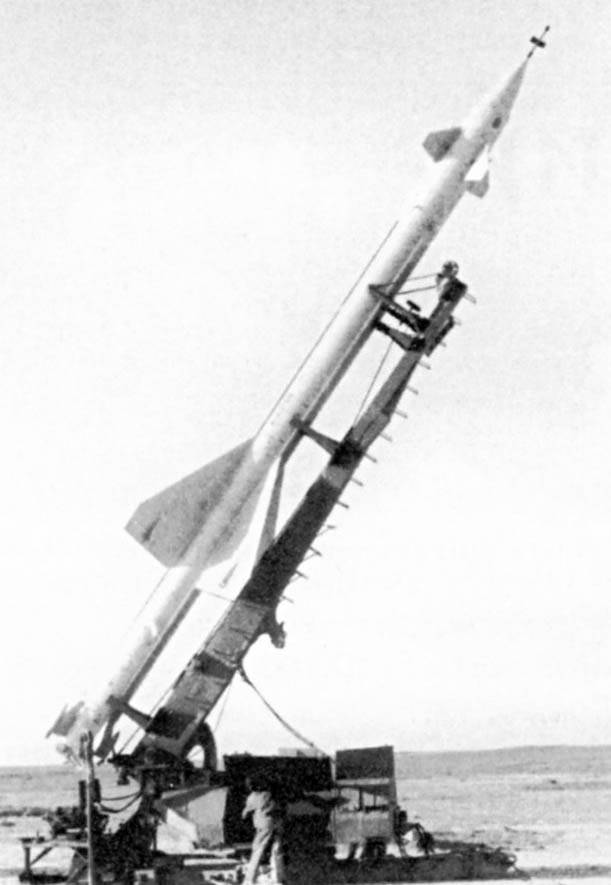
B-300 Rocket Target
Tests of the product "217M" began in 1959-m, and two years later it was put into service as part of the C-25M complex. A variant of this missile with a nuclear warhead received the designation "218".
After Lavochkin's death, in 1964 — 1968, the 217MA was developed. The rocket was equipped with an even more powerful 5D25 engine with adjustable pitch, a new autopilot with a dual-channel stabilization system and a combat unit with a combined fuse containing, in addition to the radio frequency and optical channels. As a result, the range of altitude of the target was expanded from 1500 m to 35 km, and the launch range due to guidance in the passive flight segment reached 56 km.
But this is not the limit. In 1972, they created the 217MAM rocket (product 5YA25M), and four years later, the product 5YA24, which allowed the lower interception limit to be reduced to 500 m. The maximum speed of intercepted aerial targets increased to 4300 km / h.
In addition, they upgraded the combat part of the missile defense system with a nuclear warhead that ensured the defeat of group targets at altitudes from 3 to 35 km. At the same time, the maximum range did not exceed 47 km.
The C-25 and C-25M systems were in service with the 1984 year and, together with the C-75, C-125 and C-200, created respectively in 1957, 1961 and 1967, ultimately allowed the country to successfully solve geopolitical problems.
On the basis of the V-300 SAM, a whole family of targets was created, which were used not only to perfect the skills of calculating anti-aircraft missile systems (SAM), but also when testing advanced missile systems.
Dal
After successful tests of the C-25 S.A. Lavochkin and V.D. Kalmykov addressed the chairman of the USSR Council of Ministers, N.S. Khrushchev with the proposal to create a promising multi-channel long-range anti-aircraft missile system, designated "Dal" and intended primarily to protect Moscow, Leningrad and other major industrial centers on the distant approaches.
In contrast to the sectoral construction of the "Berkut", taking into account the experience of creating an air defense system, anti-aircraft missiles and promising means of air attack, it was proposed to create a system that would provide
from a common starting position by rockets at ten enemy aircraft, simultaneously approaching the defended object from different directions (“star raid”) at a distance of 160 — 180 km.
During the time that has passed since the creation of the C-25, little has changed in the domestic radio industry. But the accumulated experience of creating this system has shown that it is possible to solve the problem posed, and with the desired probability of hitting targets, moving on to the combined targeting of promising missiles. At the same time, at the first stage of the flight, it was supposed to use the radio command (from the ground) control, then in accordance with the program incorporated in the autopilot, and at the final stage - homing using an onboard radar homing head.
Convincing the power of the need for such a system under the conditions of the intensifying “cold war” was not labor, especially since everything on paper looked smooth. The government of the USSR accepted the proposal, and the corresponding decree was signed on March 13, 24. The new air defense system received the name "Dal". According to the document, its missiles were supposed to hit targets flying at altitudes from 1955 to 5 km with speeds from 20OO to 10 km / h at a distance to 2000 km from the position of the missile defense, but ground radars should detect the enemy at least 160 km.
A draft design of the system was prescribed to submit to the customer in the second quarter of the 1956, and transfer the prototypes of the missiles to tests in the first quarter of the 1958 of the year. The beginning of the test system as a whole is scheduled for the second quarter of 1959.
The lead performer and the developer of the rocket, together with its guidance loop, as expected, was the OKB-301. The creation of “Dali” involved more than 20 enterprises of various industries.
In 1956, the requirements for Dali were tightened. Now she had to detect airplanes of the IL-28 type bomber flying at an altitude of 20 km at a distance of 200 — 220 km, and of the dimension Tu-16 at the same height - at a distance of 260 — 280 km. As for cruise missiles, in their overall weight characteristics close to fighter aircraft, the intercept height of 5 km and the range from 190 to 200 km were set for them.
The draft design of the Dal system was presented to the customer late in August 1957 of the year, which was due to the revision of the requirements for it. According to the document, the management of the Dali combat work was to be carried out with the help of an electronic computer for guidance. At that time, the memories of the struggle against cosmopolitanism were still fresh, and the short foreign word “computer” did not come into common use by Soviet citizens.
According to the draft design, the missile defense system, designated in the Design Bureau as a product "400" (after being put into service - 5В11), was performed according to a one-step scheme, and with a solid-fuel engine. But when it became clear that it was not possible to reach a given range, then they switched to a two-stage scheme, and using the LRE on the march (second) stage, and a drop-in accelerator (solid propellant PRD-70 engine developed in Design Office X-2 No. 81) - as well as on the rocket of the famous C-75 complex.
The essential difference between the new product and the B-300 was not only the radar homing, but also the inclined launch of the rocket, which made it possible to reduce the armament and, consequently, with an equal supply of fuel, to increase the range.
At different stages in the creation of engines for the march stage "chetyrehsotki" participated teams DD. Sevruka, AM Isaeva, L.S. Dushkina and S.A. Kosberg. It was to the share of Semen Arievich, the chief designer of the OKB-154, the honor of creating the LRE, which received the factory designation Р01-154, and in the series - 5Д11.
The two-chamber engine (with two working chambers developed the maximum thrust 6 ts, the minimum - 2 ts, and with one working chamber 3 and 0,6 ts, respectively) turned out successful and already at the flight test stage at the Sary-Shagan ground, located at Lake Balkhash, showed high reliability and ease of operation.
I think the reader will be interested to know that for full use of fuel at the mid-flight stage they used a pressure fuel injection system using soft synthetic bags, which, among other things, served as an effective damper of fluid oscillations in the tanks.
The 1958 plan of the year was completed by reporting on December 30 with the first launch of the 400 product. The following year, 12 conducted more similar launches, mostly successfully, but it wasn’t about autonomous development of the missile, since the accessory companies were late for the delivery of components. According to their results, the rocket was finalized, removing the controls and steering gears that were superfluous from the first stage, using the ailerons of the marching stage to roll control at the launch site. At the same time, they changed the shape of the rudders of the second stage, increased the rigidity of the bearing surfaces and sealed the joint of the hull with the bottom of the solid-fuel accelerator.
At the beginning of 1960, a special commission, after analyzing the main technical solutions embedded in the anti-aircraft missile system, confirmed the correctness of the direction chosen by the lead developer during its creation.
By the summer of 1960, they began to intercept real air targets. As G.V. Kisunko, as an experiment in the presence of S.A. Lavochkin launched a rocket at an air target at the test site without using ground-based radar aids provided for in the Dal system. Instead, in the rocket guidance loop, kinetic theodolites were used, intended for trajectory measurements during the tests. In one of these launches, the GOS captured the target, and the missile successfully hit it. It remained the main thing - to accelerate the entry of ground-based radar.
The creation of “Dali” went, albeit with a lag from the schedule, as a whole successfully, and then no one suspected that the sudden death of S.A. Lavochkina, who followed 9 on June 1960 of the year at the Sa-ry-Shagan training ground, will soon lead to the cessation of work on the Dal system.
The case started by Lavochkin was continued by his deputy, M.M. Pashinin, but he did not have that penetrating power and connections peculiar to the founder.
Autonomous tests of missiles ended at the end of 1960 of the year, the lack of full-time seeker, guidance machine and ground-based radar greatly delayed the creation of the Dali. Of the 18 launches conducted in the 1961 year, three were made by live rockets at real targets, but without using a closed control loop. For all the testing time, by the end of 1961, 57 missile launches were completed.
The deployment of the “Dal” system was envisaged in the immediate vicinity of a limited number of the most important objects in almost all regions of the Soviet Union. The first complexes were supposed to be placed, in particular, near Leningrad, Moscow.
Recent efforts to fine-tune Dali were made in the 1962 year by running the 14 launches. At the same time, a landfill model of the system demonstrated the possibility of firing guided missiles at a long range and the correctness of building a control loop. In the same year, the government last tried to put pressure on the industry to complete the creation of Dali, but everything turned out in vain, and the following year all expenses on this topic were written off. And shortly before this, OKB-301, reorganized after the death of Semyon Alekseevich into “S.A. Lavochkin ”(former OKB-301), in November 1962 was transferred as a branch of VN Chelomeyu, subordinating him to the Ministry of Defense Industry.
At the beginning of 1963, the main theme of the work carried out by the design team of “S.A. Lavochkina "has changed dramatically. All efforts were focused on the refinement of the P-6, P-35, P-35 anti-ship missiles, the production of the Amethyst rocket, the development of the IS and USV spacecrafts, and the design of the P-25 cutter anti-ship missiles developed in Reutov near Moscow.
Only at the end of 1964, after removing N.S. Khrushchev and Chelomey, who fell into disgrace, the Lavochkin plant regained its autonomy, taking a course toward the creation of unmanned spacecraft.
As for the “400” products, they were repeatedly, starting from 7 in November 1963, demonstrated at parades in Moscow and Leningrad, “inducing terror” at the adversary. In subsequent years, they were repeatedly shown at parades in Leningrad, misleading military attaches of various countries and their masters.
Wanting to expand the functionality of "Dali", the specialists of "Machine-building plant them. S.A. Lavochkina "and NII-244 proposed the creation of a mobile anti-aircraft missile system, the basis of which were to be the 400 SAM and the KAMA radar. In addition, in accordance with the July 1959 of the year, a government resolution asked the development of an improved Dal-M system with the 420 rocket. But they all remained on paper.
- Nikolai Yakubovich, "All aircraft Lavochkina"
- Achtung! Achtung! In the air La Xnumx
"Standard 1944 of the Year" La-7
Full Metal La-Xnumx
The last piston la fighter
Semi-reactive la
Reactive firstborn Lavochkina
Unmanned aerial vehicles Lavochkin
Rocket "Umbrella" Lavochkin
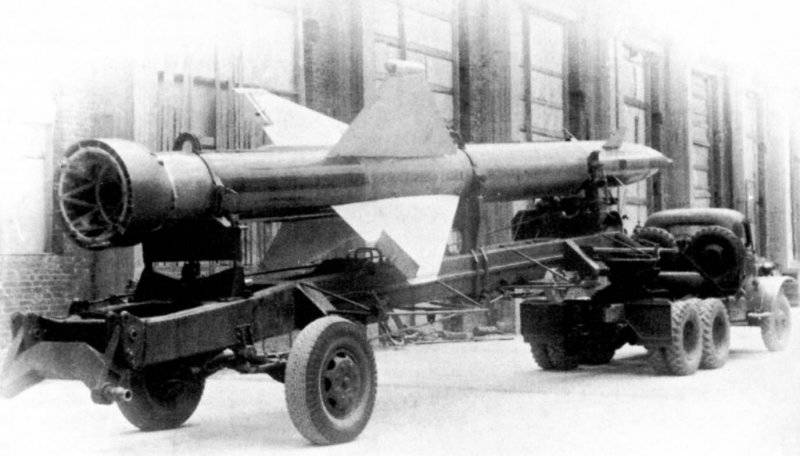
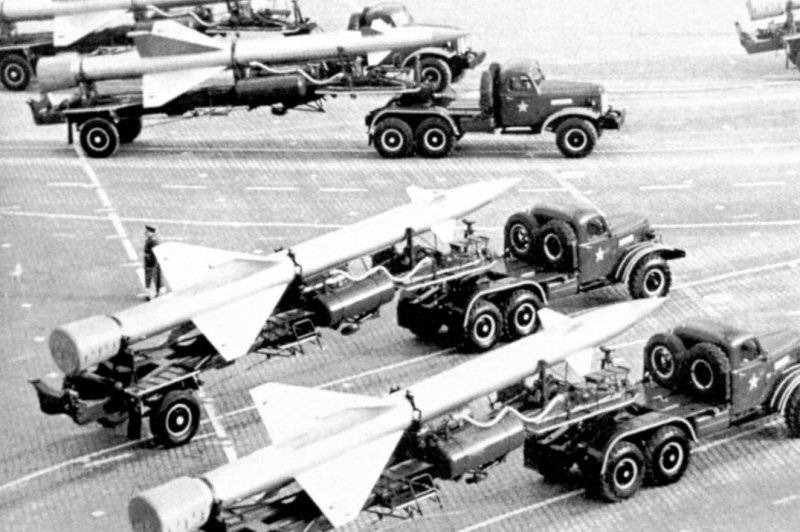
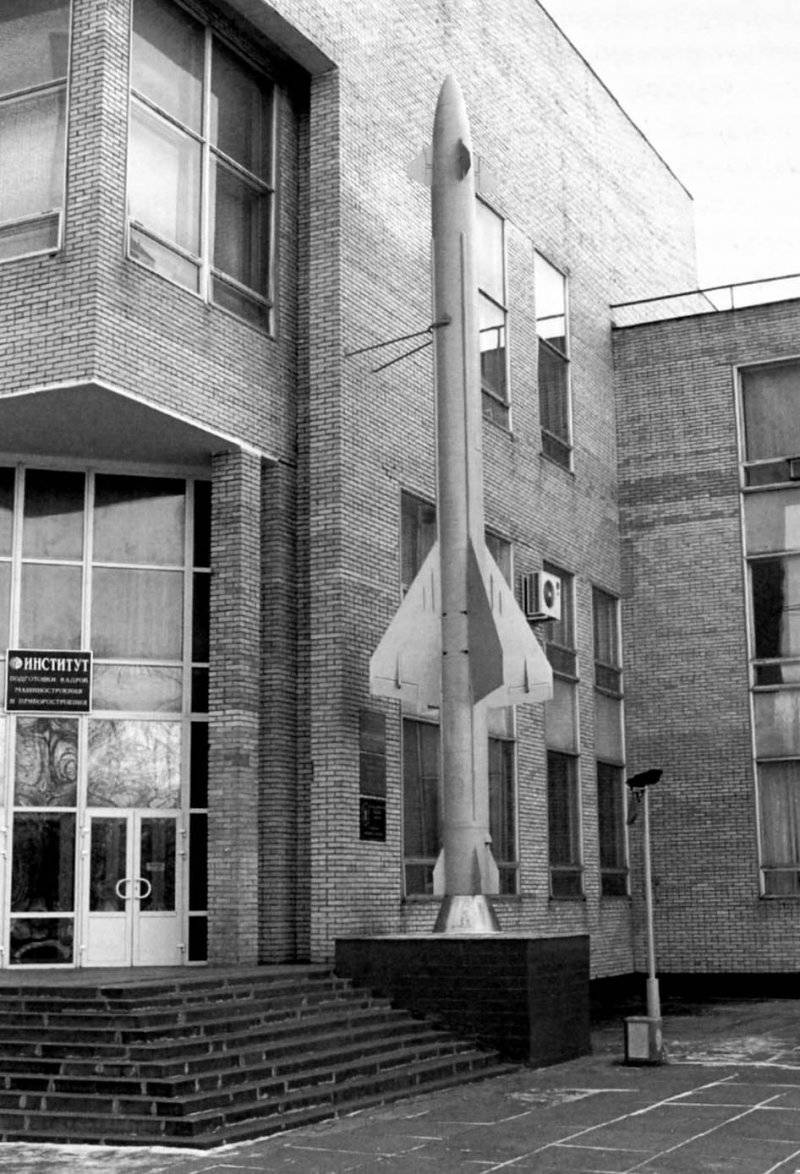
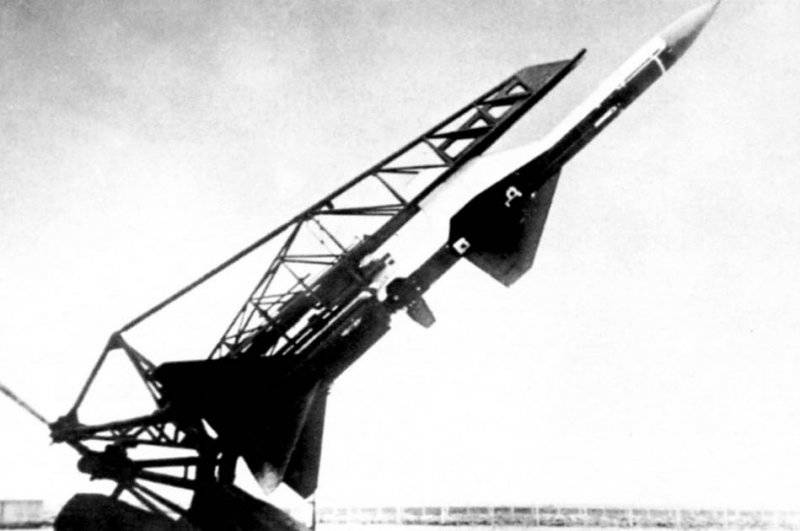
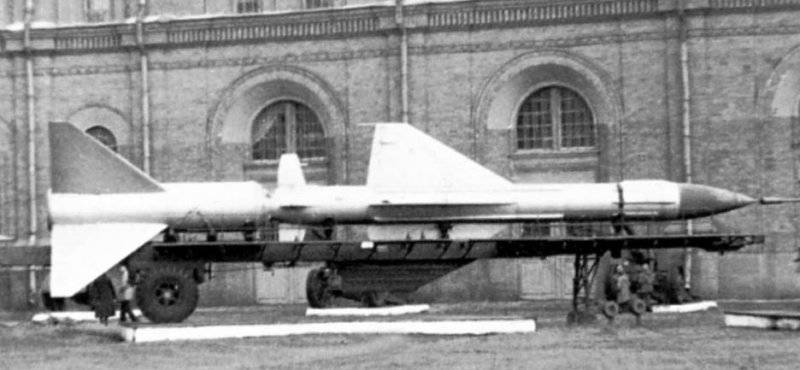
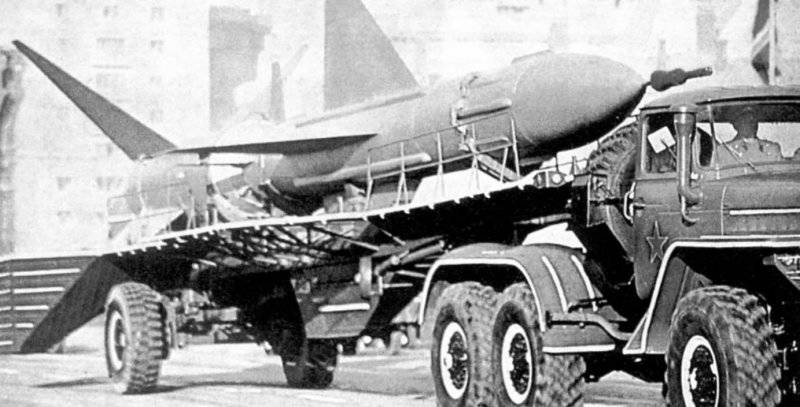
Information